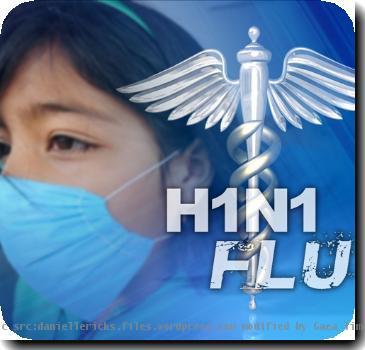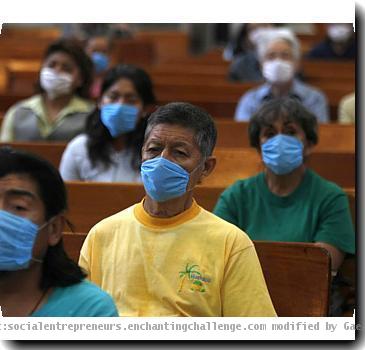CDC surveys find swine flu vaccination rates highest in New England, lowest in the South
By Mike Stobbe, APThursday, April 1, 2010
CDC: New England tops in swine flu vaccinations
ATLANTA — New England leads the nation in swine flu vaccinations, while the South has the lowest rates, U.S. health officials said Thursday in the first state-by-state report on turnout.
Tiny Rhode Island has the highest rate of about 39 percent — three times higher than Mississippi, which has the lowest percentage of residents vaccinated, according to the Centers for Disease Control and Prevention.
The CDC also reported that a record number of health care workers — nearly two-thirds — got seasonal flu vaccines last summer and fall, but the turnout for swine flu shots was much lower, more than a third.
The reports offer the first look at how the swine flu vaccination campaign played out around the country.
About 72 million to 81 million Americans — about 24 percent — have been vaccinated since October, CDC officials said Thursday.
At first, doses were hard to come by because of supply limitations. But as flu cases dropped, so did demand and now there are tens of millions of unused doses.
Health officials last week renewed their push for vaccinations, citing a recent uptick in hospital cases in Georgia.
The CDC calculated state rates from two telephone surveys that included about 140,000 adults and nearly 75,000 children. The surveys covered vaccinations through January.
Rhode Island’s high rate of 39 percent was followed closely by five other states — Massachusetts, Maine, Vermont, South Dakota and Hawaii.
Mississippi came in with the lowest rate of 13 percent. Many of the 13 other states with rates at or below 20 percent are in the Southeast and South Central regions, including Texas, Louisiana, Arkansas, Alabama and Georgia.
Experts have said it’s difficult to compare state vaccination rates because situations vary from place to place.
For example, the Southeast was hit earlier in the large wave of illness last summer and fall — before vaccines were available. In late November, when vaccine was finally becoming plentiful, swine flu was easing in some Southeastern states but was widespread and more worrisome in the Northeast.
New England was “able to take advantage of that demand with ample supply by then,” said Dr. Anne Schuchat, a CDC flu expert, speaking during a press conference Thursday.
Also, the way state and local health departments organized clinics and distributed vaccine differed. For example, both Rhode Island and Maine had aggressive, statewide efforts to hold clinics at schools, Schuchat said.
“There was not a lot of details by the federal government about how to how get this done. It was really left up to the states,” said Andrew Pekosz, a flu expert at Johns Hopkins University.
“Some states were more efficient,” said Jim Cohn, a spokesman for Walgreens, the nation’s largest drugstore chain and a large provider of swine flu vaccinations.
The CDC reports also found:
— 37 percent of children were vaccinated. Again, the rate was highest in Rhode Island, about 85 percent. Georgia had the lowest rate, about 21 percent.
— 33 percent of people in priority groups got the vaccine. That includes children and young adults, health care workers, pregnant women and those with medical conditions that put them at higher risk for complications.
— 62 percent of health care workers got seasonal flu vaccinations, according to an Internet-based survey of about 1,400 health care workers. The highest previous rate for health care workers was just shy of 50 percent.
— 37 percent of health care workers got swine flu vaccinations.
Since it was first identified last April, swine flu has sickened about 60 million Americans, hospitalized 265,000 and killed about 12,000. The U.S. death toll from the new H1N1 virus, declared a global epidemic, is about one-third of the estimated deaths from a regular flu season.
On the Net:
CDC report: www.cdc.gov/mmwr
Tags: Atlanta, Diseases And Conditions, England, Epidemics, Europe, Georgia, Immunizations, Infectious Diseases, Labor Issues, North America, Public Health, Rhode Island, United Kingdom, United States, Western Europe
|
June 10, 2010: 3:23 pm
“The U.S. death toll from the new H1N1 virus, declared a global epidemic, is about one-third of the estimated deaths from a regular flu season”. Yes, that’s right - the people who told you the ordinary flu would kill millions was 300% LESS DEADLY than ORDINARY FLU. With the U.S. just dumping 65 MILLION unused doses, you can rest assured that if you were among the 24% of Americans who got it, you nominated yourself for the Darwin Award. |




Kirk Patrick